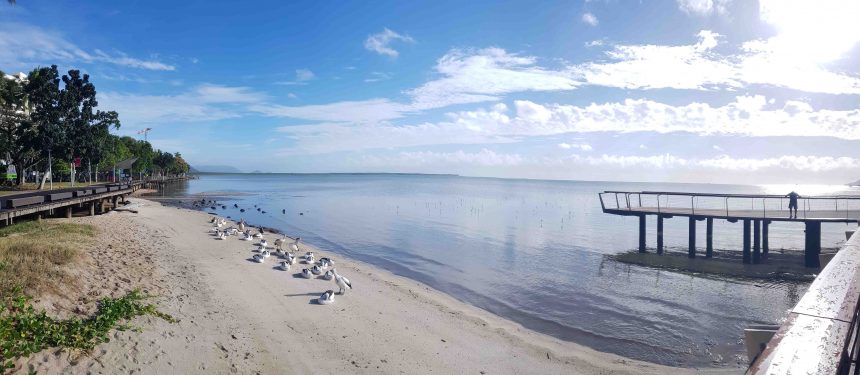Australia’s ELICOS sector has continued its modest growth for a fifth consecutive year, with the industry reaching several record high marks in 2017. But, while overall the sector grew, a gap between the haves and have-nots is beginning to widen.
News and business analysis for Professionals in International Education
Have some pie!
Growth “patchy” as Australian ELICOS continues improvement
 Cairns in northern Queensland is helping drive ELICOS students up in the state. Photo: The PIE
Cairns in northern Queensland is helping drive ELICOS students up in the state. Photo: The PIE The latest figures, collated in English Australia’s National ELICOS Market report, show Australia’s English language sector continued to experience moderate growth, improving 2% in enrolments and 1% in total student weeks, helping it improve 2% to reach a value of AUD$2.3b.
While national figures improved to just shy of 177,700 enrolments and over 2.3 million student weeks, however, the majority of the growth was felt in the eastern states of Queensland, New South Wales and Victoria.
“If we can maintain a 3-5% growth rate annually, that would be a sustainable position to be in.”
“Performance nationally is patchy,” English Australia chief executive Brett Blacker said.
“It’s definitely going ok for providers on the east coast, but not so good for providers in Western Australia and South Australia.”
Both South Australia and Western Australia experienced double-digit percentage declines in 2017, with the latter particularly affected, losing over a quarter of its market to end the year 28% down from 2016.
John Paxton, director of Perth International College of English in WA, said the state was struggling to counter negative perceptions such as a lack of jobs and affordable accommodation for international students.
“The perception out there in the marketplace [becomes] the reality, and the perception isn’t correct,” he said.
“It’s got to be a really concerted effort to tell overseas students that this is a great place to study, and one of the things is the amount of jobs here,” he added, pointing to an increased number of opportunities sparked by the opening of four new hotels in the city.
Blacker agreed with Paxton, saying misconceptions that WA was performing poorly had started to self-perpetuate, and “people believe it because they’re saying it”.
“Performance nationally is patchy”
Queensland experienced significant growth, which improved 15% to usurp Victoria as the second most popular ELICOS destination, off the back of strong growth among those studying on visas other than for study, such as working holiday or visitor.
“Queensland was the shining light for ELICOS students in 2017,” Blacker told The PIE News.
“What we have seen is Queensland has invested significantly in their international education strategy, and I think they have to get some credit for innovations in terms of strategies like the Best Semester Abroad campaign.”
Queensland also remained the only state at near parity between the number of student and non-student visa learners, with other states having a clear majority of learners on a student visa.
Blacker pointed out, however, that while non-student visas helped push Queensland’s enrolments to second highest, it had less impact on its student weeks. Those on a student visa studied for an average of 16.3 weeks compared to just 4.9 for those on a visitor visa.
The state remained behind Victoria as third for total weeks and had the lowest average study length per student in Australia. The national average length of stay also decreased slightly due to this.
Relative to other Australian sectors, ELICOS has had modest growth in recent years, which Blacker said was due to more countries providing English tuition and a global slowdown of ELT.
“The global ELT has been running at snail’s pace for years, and we saw the UK rebound in 2017,” he said.
“But they’d lost something like 50,000 students year on year the two years prior. In fact, if you look at the performance out of the other key markets, Australia had somewhat been bucking the trend.”
He added that at a national level, the sector should set its sights on current growth levels.
“If we can maintain a 3-5% growth rate annually, that would be a sustainable position to be in.”
Still looking? Find by category:



We will visit WA and see how is it. We hope get more Taiwanese and Japanese there !
Hello,nice share.